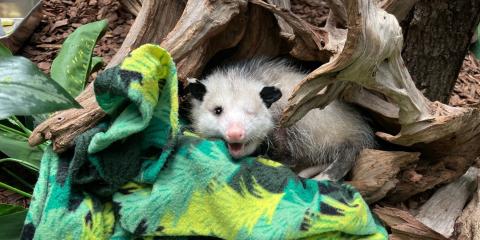Physical Description
Pallas's cats have the same thick, long fur, flat faces and stocky builds of domestic Persian cats. Their round ears are set low on their heads, so they can peer over rocks while keeping their ears hidden. Their coats range in color from tan to gray to an almost orange-red, sometimes changing with the seasons to help them blend into the landscape. They can have dark stripes, especially on their tails. Many of their hairs have white tips, giving their coats an almost frosted look.
Size
Pallas's cats are about the size of small, stocky domestic cats. They are around 20 to 24 inches long with an 8- to 10-inch-long tail. They weigh between 4 and 11 pounds.
Native Habitat
Pallas's cats are found in Turkmenistan, Iran, Kyrgyzstan, Kazakhstan, Bhutan, Nepal, India, Pakistan, Afghanistan, China, Mongolia, and Russia. They live in shrublands, grasslands, deserts and rocky areas.
Lifespan
Pallas's cats typically live to be 8 to 9 years old.
Communication
Pallas's cats yelp, growl and purr. They use scent to mark their territories, which are unusually large for such small cats — about 3.5 to 7 square miles.
Food/Eating Habits
Pallas's cats are carnivores and eat mainly small rodents, including gerbils, voles, hamsters, pikas and small marmots. They will also eat small lizards and birds.
They ambush their prey rather than chasing it, often waiting at the exits of rodent burrows or even sticking their paws in to try to scoop out their prey.
Sleep Habits
Pallas's cats prefer to hide and sleep during the day and hunt at dusk, dawn and in the night hours. They spend the days in shadowy crevices, caves and burrows dug by other animals.
Social Structure
Pallas's cats are typically solitary in the wild. Pairs come together only for very short times to mate. A mother will stay with her kittens until they are ready to hunt on their own, typically around 6 months old.
Reproduction and Development
They have a short breeding season in the early spring when males and females come together to mate. About 74 to 75 days later, the female gives birth to a litter of three to six kittens.
The kittens are born blind and helpless, and they measure about 5 inches long. Their eyes open about three weeks later, and their mother begins to teach them to hunt.
Conservation Efforts
The main threat the Pallas’ cat faces is accidental poisoning. In some areas, people poison pikas and other small rodents (the cats’ main food source) because the rodents eat farm crops and produce. Pallas’ cats can die if they eat a poisoned rodent.
They are also at risk from habitat loss. Their survival depends on having enough scrubby, rocky habitat with places to hide and sleep.
Help this Species
- Share the story of this animal with others. Simply raising awareness about this species can contribute to its overall protection.
- Are you a student? Did you love what you learned about this animal? Make it the topic of your next school project, or start a conservation club at your school. You'll learn even more and share the importance of saving species with classmates and teachers, too.
Meet the Animals
Akar is the first of two female Pallas’ cats. She was born April 17, 2020, at the Red River Zoo in North Dakota. She came to the Zoo with her sister, Ceba, in April 2022.
She can often be found sitting on the wooden platform at the back of the exhibit where she watches people and wildlife.
Want to tell them apart? Akar has tan-colored diamond shaped spots next to her nose.
Ceba is the second of two female Pallas’ cats. She was also born April 17, 2020, at the Red River Zoo in North Dakota. She came to the Zoo with her sister, Akar, in April 2022.
She can often be found on the roof of the wooden hut at the front of the exhibit.
Want to tell them apart? Ceba has a tan spot next to her nose with a thin line that extends outward.
Animal News

Remembering Basil, Our Virginia Opossum

